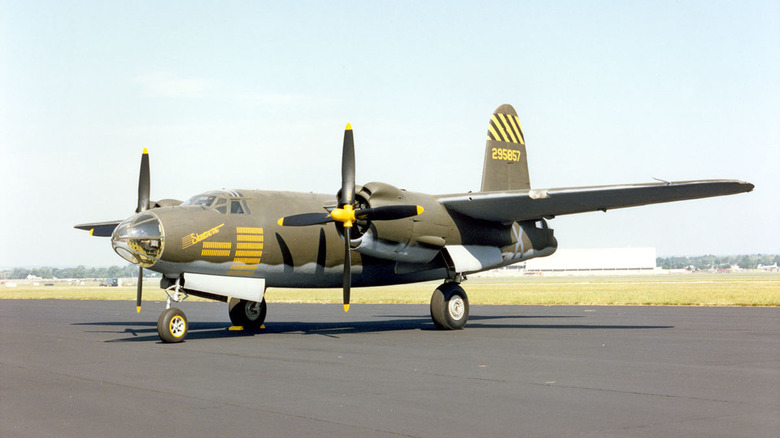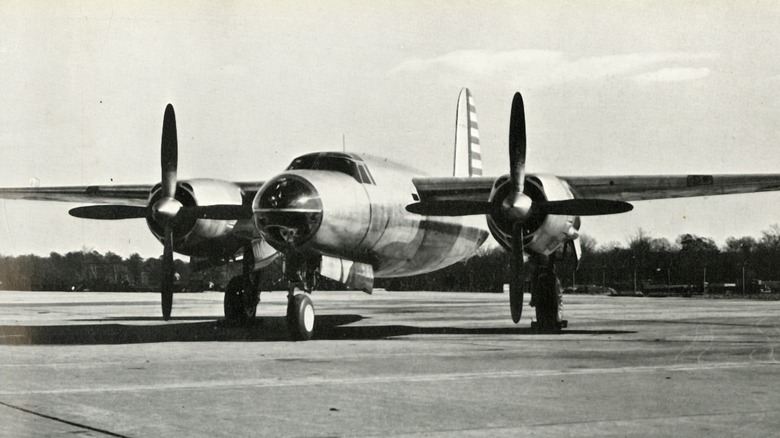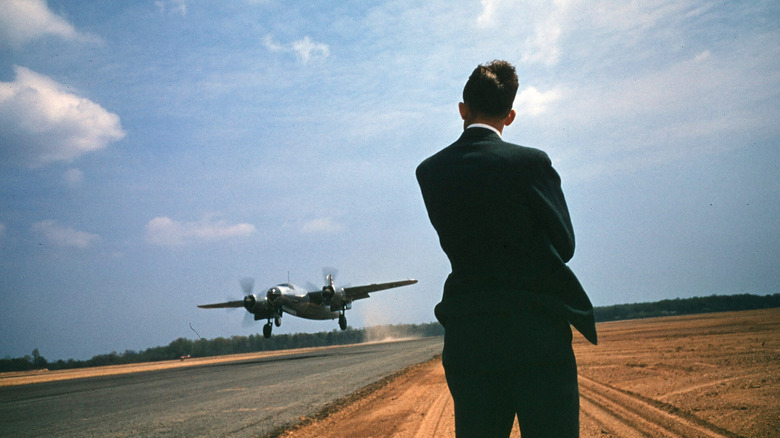The Martin B-26G Marauder: America's Advanced WWII Bomber With A Bad Reputation
Warfare demands technological advancement. Just as numbers, intelligence and tactics can make all the difference, so too can the brilliant minds charged with developing and maintaining a technological edge over foes.
World War Two was and remains the biggest war humanity has ever seen. For the Allied and Axis Powers, the vast and various theaters of battles meant grappling with new challenges. It wasn't a matter just of sheer power or force of numbers, but of logistics too: all that might count for nothing if it can't reach where it needs to be, after all. The era saw some fascinating tech, such as the Allies' Harley-Davidson.
The science of aviation in particular took enormous leaps forward, as aircraft that could travel the necessary distance to far-away targets became crucial for operations. One innovative bomber that emerged during the conflict was the U.S. Air Force's Martin B-26 Marauder. As the name suggests, it was a powerhouse indeed (like the gigantic, lesser-known Convair B-36 Peacemaker), but rather notorious too.
The development of the Martin B-26G Marauder
The Marauder began its life in 1939. That year marked the issuing of Circular Proposal 39-640, the US Army's call for a medium bomber that could travel 2,000 miles with a 2,000 lb payload at a reasonable clip. Glenn L. Martin clearly understood the assignment, and its Model 179, as the experimental aircraft was then known, was ultimately reborn as the Martin Marauder.
The US Army Air Corps issued a huge order for 1,131 of these aircraft in September 1940, though it wouldn't even advance to the test flight stage until two months later. It was, as the directive promised, a potent force, powered by twin Pratt & Whitney R-2800 engines and capable of carrying a 4,000 lb payload.
Those engines were placed beneath the wings of the aircraft and allowed it to reach a maximum speed of 285 mph (around 458 km). A relatively compact and efficient design it may have seemed to be, but these aspects of the aircraft meant that it was initially very dangerous to fly.
Why did the Martin B-26G Marauder have such a bad reputation?
With the engines, their positioning, and the size of the wings, the Marauder was a pacey aircraft indeed. The May 1944 issue of Popular Mechanics Magazine (via Google Books) stated that it "flew 100 miles an hour faster than the Flying Fortress," and that it was tremendously effective in battle. July 1943, according to the publication, marked the start of "one of the most amazing records of air warfare ... 6,700 individual sorties at a cost of only 21 Marauders ... the lowest achieved by any combat group." There's an important caveat, though: this was achieved only after the aircraft was withdrawn and its pilots were given two months of dedicated training because it was so dangerous to fly.
Prior to this, it had developed unfortunate nicknames like "Martin Murderer" and "Widowmaker," as it had a landing speed of between 120 and 135 mph (around 193-217 km/h). Stalling at any speed outside of this range, which it was prone to doing, could be fatal. Veteran pilots used to flying other models required extra time to adapt to the Marauder's foibles as a result.
It had a short but very busy and destructive life, as befits such a temperamental machine: largely deployed in Europe during the war, production of the Marauder stopped in 1945. During their time in service, Marauders dropped a total payload of 150,000 tons.


